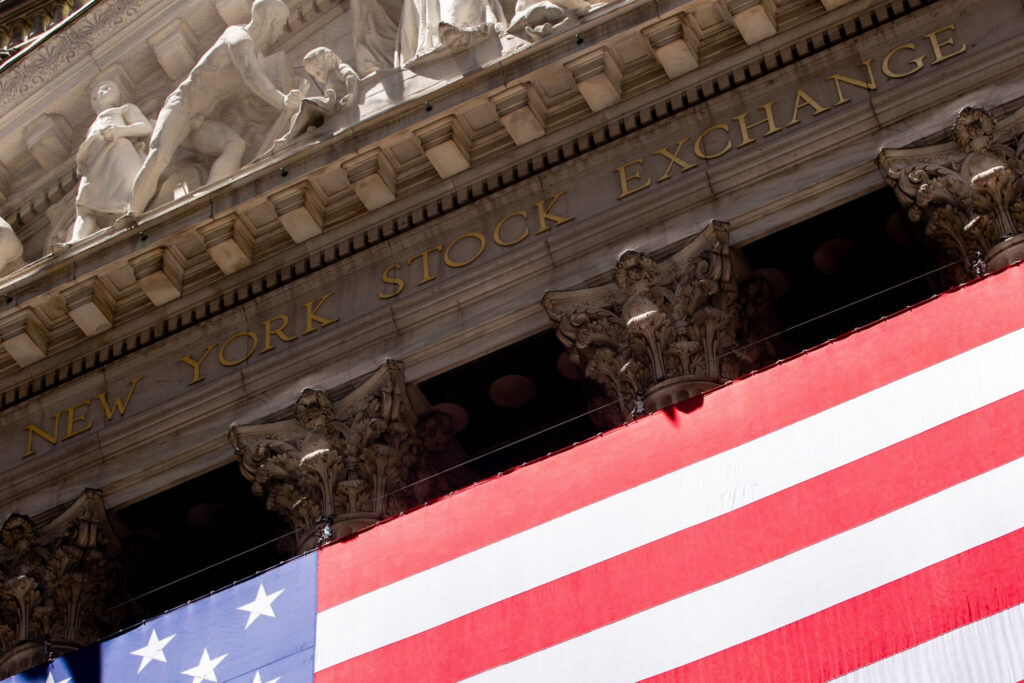As talks over raising the U.S. government’s $31.4 trillion debt ceiling intensify, Wall Street banks and asset managers have begun preparing for fallout from a potential default. The financial industry has prepared for such a crisis before, most recently in September 2021. But this time, the relatively short time frame for reaching a compromise has bankers on edge. The Associated Press has the story:
Wall Street mixed ahead of US shoppers data
Newslooks- NEW YORK (AP)
Wall Street is drifting Monday ahead of reports that will show how much a slowing economy is hurting what’s prevented a recession so far: solid spending by U.S. households.
The S&P 500 was virtually unchanged in its first trading after closing out a second straight down week. The Dow Jones Industrial Average was edging down 19 points, or 0.1%, to 33,280, as of 11 a.m. Eastern time, while the Nasdaq composite was 0.1% higher.
Some of the sharper moves came from companies announcing takeovers of rivals, including a 6.3% drop for energy company Oneok after it said it’s buying Magellan Midstream Partners. Magellan jumped 15.5%. But the larger market was relatively quiet as several concerns continue to drag on Wall Street.
Chief among them is the fear of a recession hitting later this year, in large part because of high interest rates meant to knock down inflation. But concerns are also rising about cracks in the U.S. banking system and the U.S. government’s inching toward a possible default on its debt as soon as June 1, which economists warn could be catastrophic.
So far, a resilient job market has helped U.S. households keep up their spending despite all the pressures. That in turn has offered a powerful pillar to prop up the economy. On Tuesday, the government will show how much sales at retailers across the country grew last month.
Several big retailers will also show how much profit they made individually during the first three months of the year, including Home Depot on Tuesday, Target on Wednesday and Walmart on Thursday.
They’re among the few companies left who have yet to report their results for the start of the year. The majority of companies in the S&P 500 have topped expectations so far, though the bar was set particularly low for them coming in.
S&P 500 companies are still on track to report a drop of 2.5% in earnings per share from a year earlier. That would be the second straight quarter they’ve seen profit drop, according to FactSet.
As earnings reports slide out of the spotlight, the U.S. government’s debt-ceiling negotiations are shoving in. The federal government is risking its first-ever default if Congress doesn’t raise the credit limit set for federal borrowing.
Democrats and Republicans are arguing about whether an increase should be tied to cuts in government spending, and talks are continuing.
Most of Wall Street expects the two sides to come to a deal after loudly complaining about it, simply because the alternative would be so disastrous for both sides. U.S. Treasurys form the bedrock of the global financial system because they’re seen as the safest possible investment on the planet.
But one worry is that politicians may not feel much urgency to come to an agreement until financial markets shake sharply to convince them of the importance.
“A debt default may not be the most likely scenario, but any prolonged debate or unexpected development has the potential to trigger higher volatility,” said Chris Larkin, managing director, trading and investing, at E-Trade from Morgan Stanley.
In the bond market, Treasury yields rose after taking a brief dip following another discouraging report on the U.S. manufacturing industry. A survey of manufacturers in New York state plunged by much more than economists expected.
The yield on the 10-year Treasury climbed back to 3.50%, up from 3.46% late Friday. It helps set rates for mortgages and other loans.
The two-year Treasury yield, which more closely tracks expectations for the Fed, ticked up to 4.00% from 3.99%.
High interest rates have meant particular pain for some smaller- and mid-sized banks. Customers are leaving to park their deposits in money-market funds and other options that are paying higher yields. High rates are meanwhile knocking down the value of investments that banks made when rates were lower.
The pressures have already caused three high-profile bank failures since March, and Wall Street has been on the hunt for other potential weak links.
Several were holding a bit steadier Monday after dropping sharply last week. PacWest Bancorp. rose 7.5% after losing 21% last week, for example.
In markets abroad, Japan’s Nikkei 225 gained 0.8% and is near its highest level since the early 1990s. It’s climbed on strong corporate earnings reports and signs that inflationary pressures might be easing.
Over the weekend, finance ministers of the Group of Seven advanced economies wrapped up a meeting in Japan with a call for vigilance given many uncertainties for the global economy.
However, they also said financial systems have shown resilience despite recent failures of several banks in the U.S. and Europe. No mention was made of the urgency of resolving the debt ceiling standoff between President Joe Biden and Republicans.







